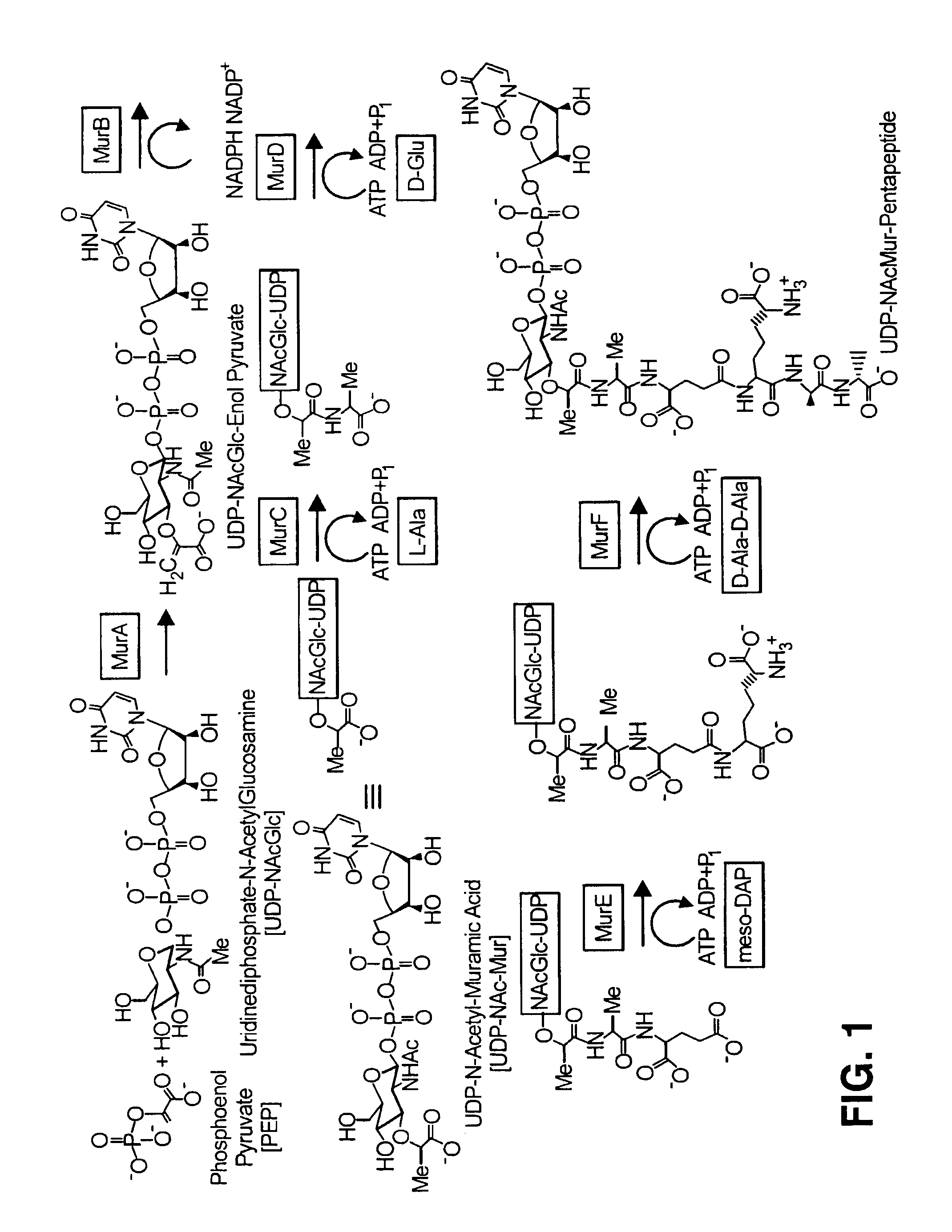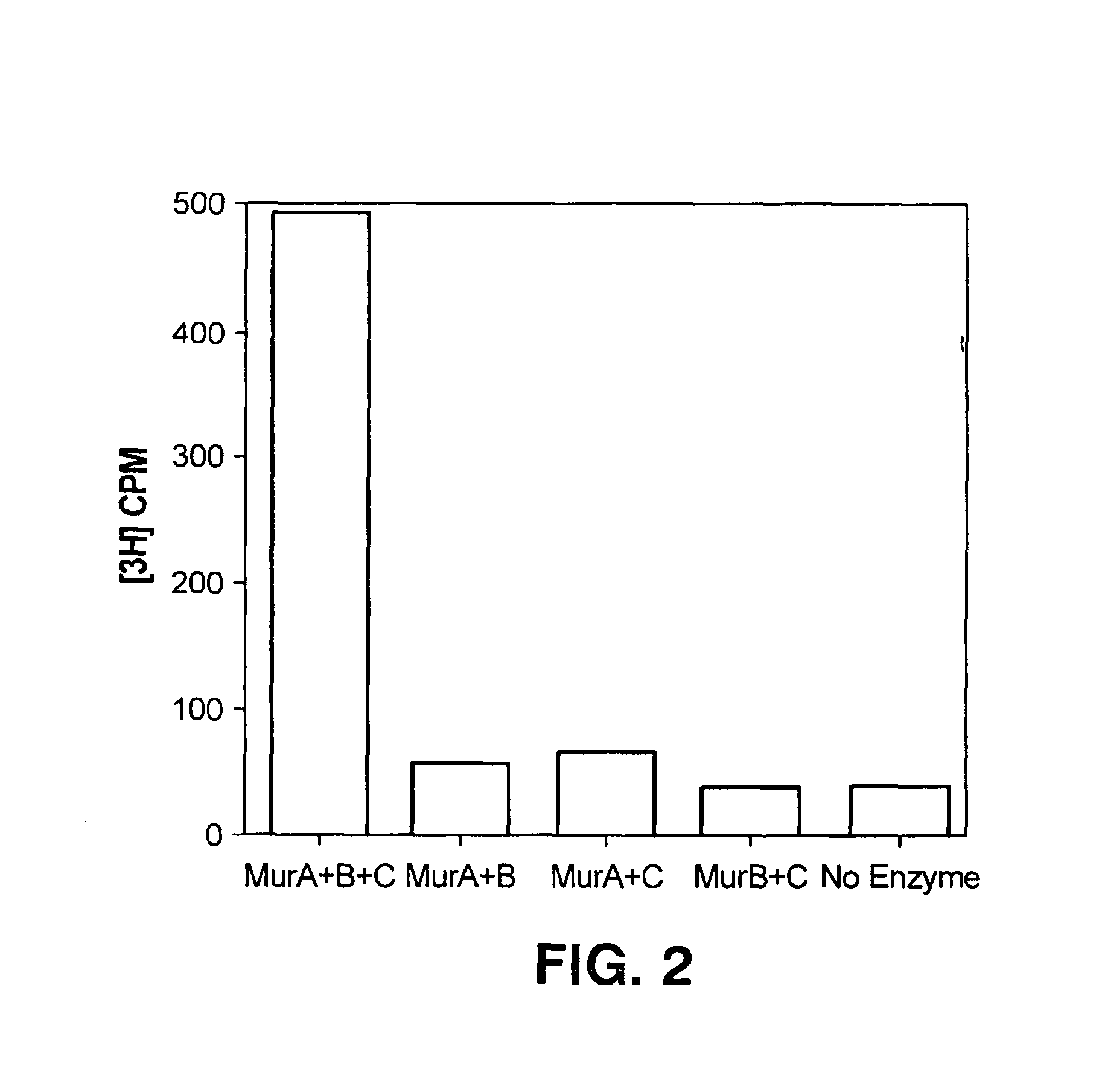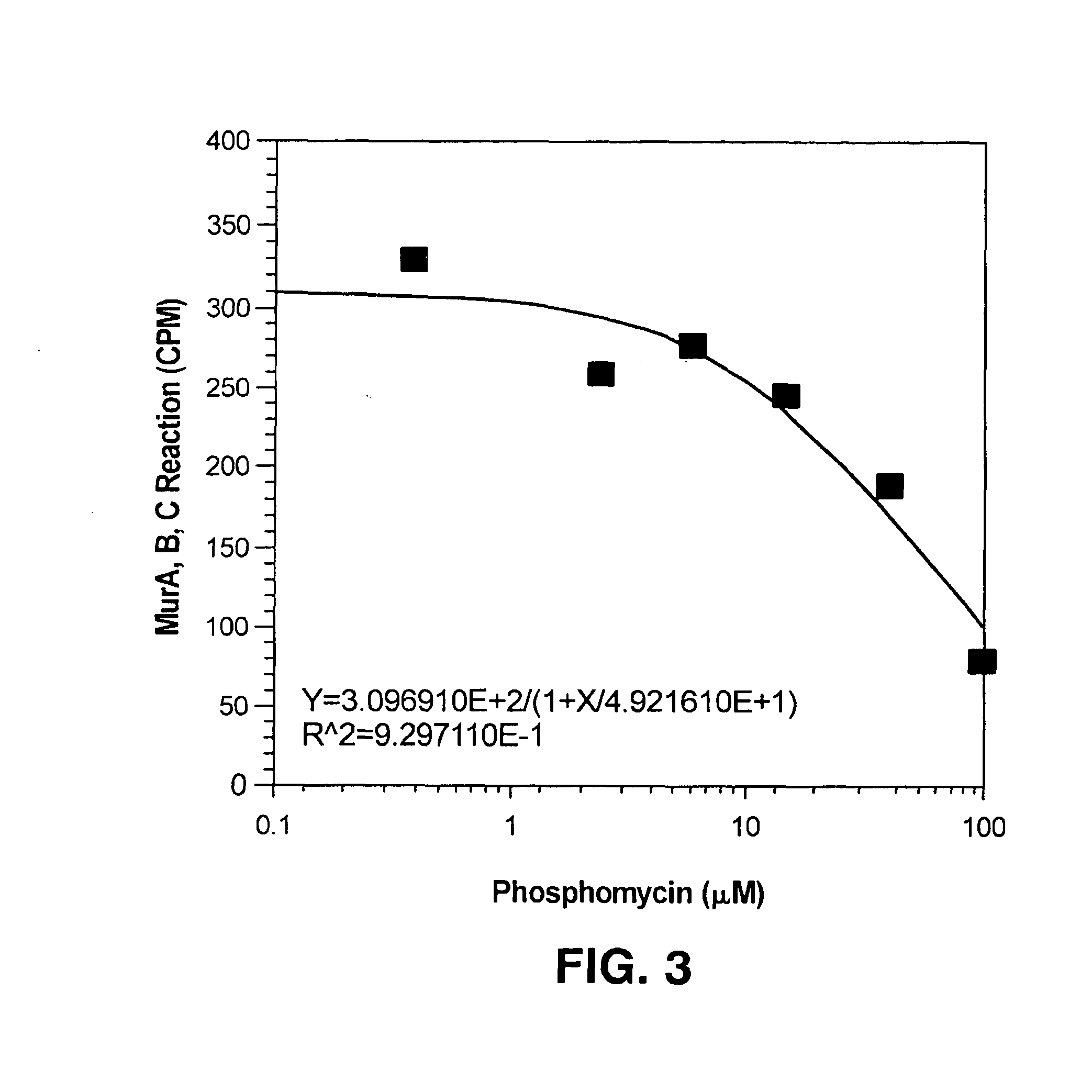Direct adsorption scintillation assay for measuring enzyme activity and assaying biochemical processes
a technology of enzyme activity and scintillation assay, which is applied in the field of methods for analyzing samples, can solve the problems of unbound substrates, radioactive substances, and too far away from beads to produce significant scintillation, and achieves high background scintillation. , the effect of high throughpu
- Summary
- Abstract
- Description
- Claims
- Application Information
AI Technical Summary
Problems solved by technology
Method used
Image
Examples
example 1
Preparation of Derivatized Polystyrene Plates With Positive Surface Charge
[0056]A 0.1% w / v solution of methyltrioctylammonium bromide (Aldrich) in water was prepared. 200 μl of the solution was added to each well of a FLASHPLATE™ and incubated at 35° C. for 2 hours. The liquid was then removed and the plates were air-dried overnight prior to use.
example 2
Enzymatic Synthesis of L-Ala-UDP-NAc-Mur
[0057]A reaction mixture was prepared, of which 2 μl contains 38 ng MurA, 34 ng MurB, 34 ng MurC, 40 pmol ATP, 40 pmol UDP-NAcGlc, 40 pmol PEP, 40 pmol NADPH, 4 pmol L-[3H]-alanine (72.3 Ci / mmol) in 50 mM Tris-HCl, pH 8, 20 mM MgCl2, 20 mM (NH4)2SO4, 1 mM DTT, 0.005% Brij-35. The mixture was incubated at room temperature for one hour. After one hour, 0.25 μl of the reaction mixture was transferred into each well of the poly-D-lysine coated FLASHPLATE™; each well contained 100 μl of 10 mM acetic acid, pH 3.0. The scintillation was counted using the TOPCOUNT™. As indicated in FIG. 2, leftmost bar labeled “MurA+B+C”, when all the reaction substrates and enzymes were present, a significant signal resulted.
[0058]As negative controls, reaction mixtures were prepared missing one of the three enzymes, as well as a reaction mixture with no enzymes present. If any one of the three enzymes were missing (FIG. 2, three center bars labeled “MurA+B”, “MurA+C...
example 3
Detection of Enzyme Inhibition
[0059]Enzyme mixtures (with 60 ng MurA, 8 ng MurB and 60 ng MurC present in each 2 μl sample) were prepared. Phosphomycin, a known inhibitor of MurA, was added to the reaction mixtures in different concentrations as shown in FIG. 3. The enzyme-phosphomycin mixture was pre-incubated at room temperature for 30 minutes. The substrates, as prepared in Example 2, were then added to the mixture to start the reaction. After 30 minutes of reaction at room temperature, 0.25 μl of the reaction mixture was transferred into each well of the poly-D-lysine coated FLASHPLATE™; each well contained 100 μl of 10 mM acetic acid. The scintillation was counted using the TOPCOUNT™.
[0060]The results of the experiment are shown in FIG. 3. As can be seen from the graph, increasing concentrations of inhibitor led to decreased scintillation count, demonstrating the ability of the assay to detect enzyme inhibition. The relatively high IC50 for phosphomycin is due to the fact that ...
PUM
| Property | Measurement | Unit |
|---|---|---|
| pH | aaaaa | aaaaa |
| pH | aaaaa | aaaaa |
| pH | aaaaa | aaaaa |
Abstract
Description
Claims
Application Information
 Login to View More
Login to View More - R&D
- Intellectual Property
- Life Sciences
- Materials
- Tech Scout
- Unparalleled Data Quality
- Higher Quality Content
- 60% Fewer Hallucinations
Browse by: Latest US Patents, China's latest patents, Technical Efficacy Thesaurus, Application Domain, Technology Topic, Popular Technical Reports.
© 2025 PatSnap. All rights reserved.Legal|Privacy policy|Modern Slavery Act Transparency Statement|Sitemap|About US| Contact US: help@patsnap.com



